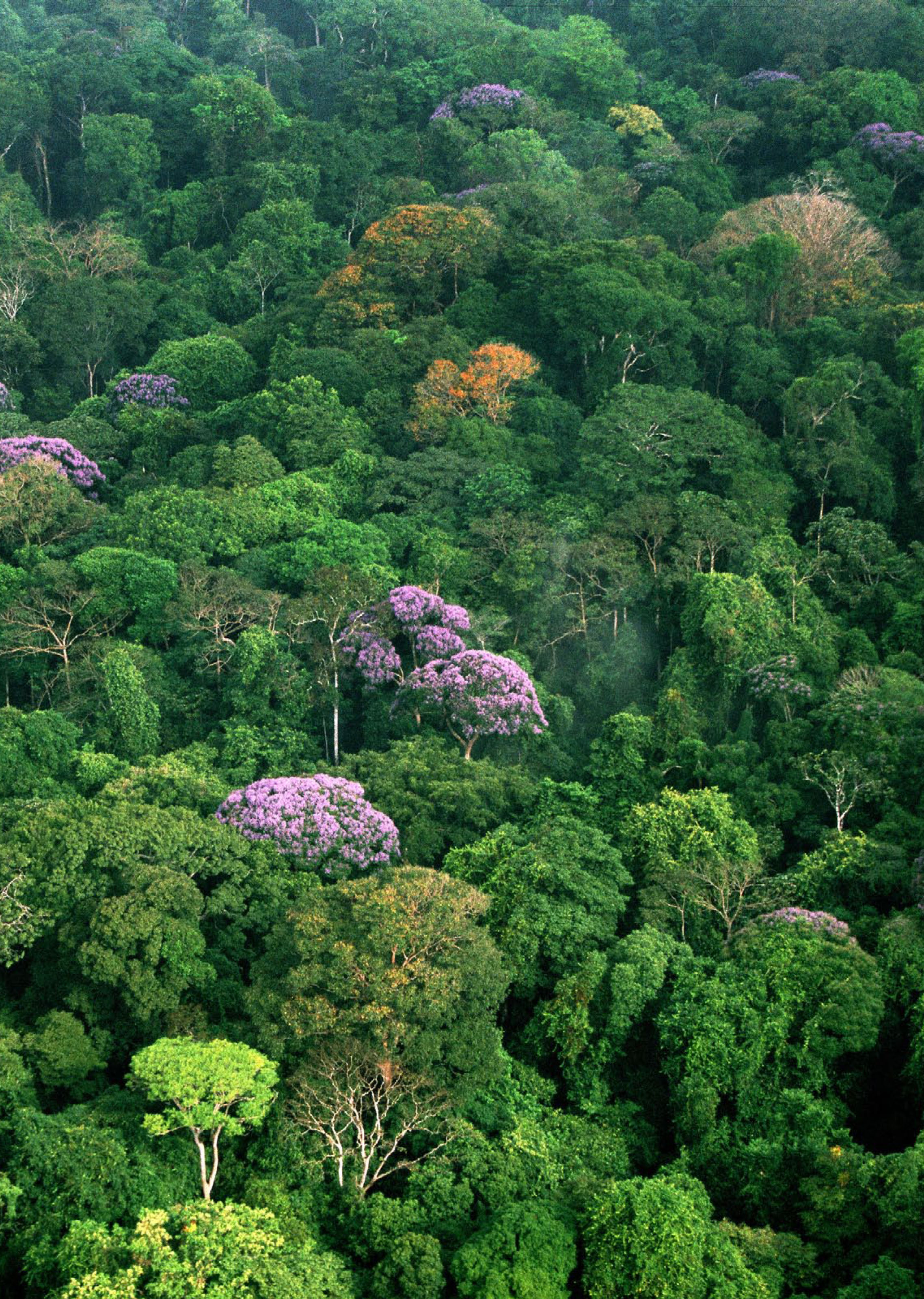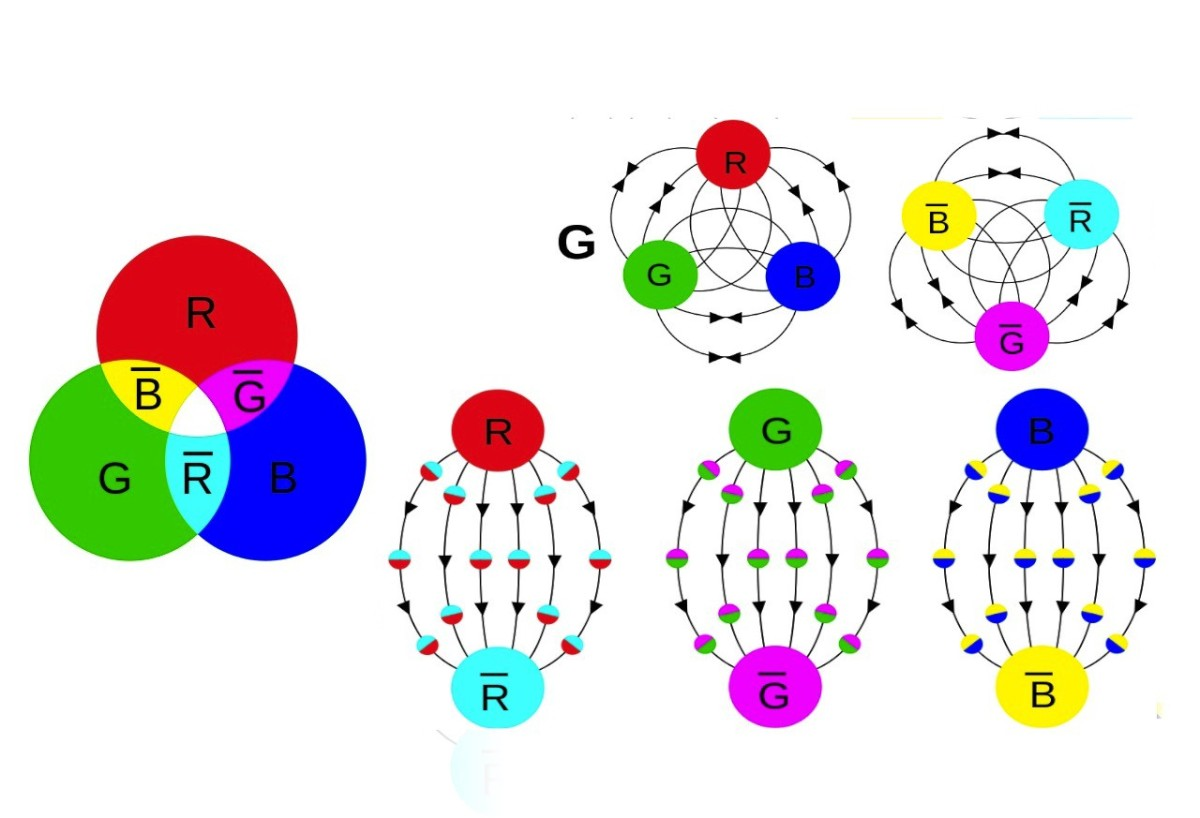The tropical forest canopy, a vibrant and complex layer of interlocking branches and leaves, plays a crucial role in our planet’s ecosystem. Not only does it house diverse wildlife, but it also serves as a vital component in carbon storage, significantly impacting forest health and mitigating climate change. Recent research utilizing innovative NASA GEDI technology reveals how various environmental factors are transforming this essential habitat. As we strive to understand the ecosystem dynamics dictated by factors like drought and heat, the importance of monitoring canopy height becomes paramount. This knowledge will aid in our efforts to protect these invaluable forests, which act as Earth’s lungs, sustaining both biodiversity and climate stability.
Often referred to as the arboreal layer of dense foliage, the tropical forest canopy is indispensable for ecological balance. This upper stratum houses numerous species and is crucial for carbon capture and storage, thereby helping alleviate the effects of climate change. Advanced tools, such as NASA’s Global Ecosystem Dynamics Investigation (GEDI), have recently allowed scientists to analyze the dynamic relationships within these canopies. Focusing on the mechanics of forest health and the impacts of climate fluctuation, researchers are uncovering vital insights into the ecosystem’s response to various environmental pressures. As we continue to explore these forest ecosystems, it becomes increasingly clear that safeguarding the canopy is essential for maintaining our planet’s climate and biodiversity.
Understanding Tropical Forest Canopy and Climate Change
The tropical forest canopy plays a pivotal role in maintaining ecological balance within these biodiverse ecosystems. Acting as a protective layer, the upper canopy not only benefits the growth of the trees beneath but also supports countless species that thrive in these habitats. Recent studies show a direct link between the health of the forest canopy and the surrounding environmental conditions, especially in light of the ongoing climate change crisis. As temperatures rise and drought conditions become increasingly common, understanding how these factors influence the canopy’s structure is crucial.
Utilizing advanced technologies like NASA’s GEDI (Global Ecosystem Dynamics Investigation), scientists can closely monitor the changes occurring within the canopy. By employing high-resolution LiDAR mapping from the International Space Station, researchers have started to uncover significant variations in canopy height that are largely driven by regional climatic shifts. Areas experiencing prolonged dry seasons, particularly within the southern Amazon, are seeing marked decreases in canopy height, negatively impacting both carbon storage capacity and biodiversity.
Impact of Climate Change on Forest Health
The ongoing climate change crisis poses significant threats to the health of tropical forests around the globe. With rising temperatures and more prolonged dry spells, these forests face increasing vulnerabilities that jeopardize their structural integrity and functional roles. The forest canopy, a critical component of these ecosystems, is particularly sensitive to climatic changes, impacting not only the trees themselves but also the myriad species relying on them for habitat and sustenance. Observations from GEDI indicate that shifts in local climates, such as changes in precipitation patterns and extended dry seasons, can lead to irreversible damage to these ecosystems.
In regions such as the central Amazon and parts of Africa, variations in canopy height can be traced directly back to environmental factors, providing vital insight into the broader implications of climate change on forest health and stability. Insights gained from utilizing LiDAR technology allow researchers to longitudinally assess these ecosystems, offering data critical for crafting effective conservation policies. By highlighting the immediate link between climate conditions and forest health, this research underscores the necessity for active interventions aimed at mitigating further damage.
The Role of Carbon Storage in Ecosystem Dynamics
Tropical forests play an indispensable role in the planet’s carbon storage capabilities, earning them the nickname ‘Earth’s lungs.’ The ability of these forests to absorb carbon dioxide helps mitigate climate change effects, showcasing their importance in global ecosystem dynamics. However, as climate change continues to exert pressure on these forests, particularly on the canopy layer, their carbon sequestration efficacy potentially diminishes. Studies have shown that taller canopies tend to correlate with higher carbon storage, so any reduction in canopy height could significantly impact the forest’s overall ability to store carbon.
Moreover, understanding the intricate dynamics between forest health, carbon storage, and climate factors can guide policymakers in creating effective strategies for conservation and restoration. With NASA’s cutting-edge GEDI technology, researchers are positioned to offer refined data that could shape these strategies. They can identify which areas of tropical forests are most susceptible to climate change and require urgent attention to maintain their role in carbon storage amid global temperature rise.
Advances in Monitoring Tropical Forests Using NASA GEDI
NASA’s Global Ecosystem Dynamics Investigation (GEDI) is revolutionizing how scientists monitor and understand tropical forests. Utilizing advanced LiDAR technology deployed from the International Space Station, GEDI provides unparalleled insights into the vertical structure of forest canopies. This technology allows for more comprehensive assessments of forest health and ecosystem dynamics than ever before, offering a window into how forests are responding to increasing climate pressures. The data collected not only helps identify regions under stress but also enhances our understanding of forest carbon storage capabilities.
Furthermore, with the ability to analyze large-scale forest regions globally, GEDI enables researchers to observe patterns and variations that were previously unrecognizable. For instance, the discovery that climatic variables such as topography and dry season lengths play key roles in canopy height variation provides valuable context for conservation efforts. Equipped with this information, scientists can better inform policies aimed at protecting these vital ecosystems, ensuring they continue to contribute positively to global carbon cycles and overall environmental health.
Long-term Implications of Canopy Changes
The implications of changes to tropical forest canopies are far-reaching, affecting not just the forests themselves but also global climate dynamics and environmental health. As these canopies, which serve as crucial habitats for many species, undergo alterations due to climate change, the biodiversity within these ecosystems faces potential collapse. The interdependencies among various flora and fauna mean that a decline in canopy health can lead to cascading effects throughout the entire ecosystem, further exacerbating the challenges presented by climate change.
Moreover, reducing canopy height directly impacts the forest’s ability to sequester carbon, which can worsen the greenhouse gas concentration in the atmosphere. This cycle of degradation highlights the urgent need for conservation and restoration efforts aimed at preserving canopy integrity. As researchers harness the power of NASA’s GEDI technology to better understand these dynamics, the goal will be to use this knowledge for the proactive management and protection of these vital ecosystems, which are essential not only for biodiversity but also for global climate stability.
Strategies for Protecting Vulnerable Forest Areas
As climate change increasingly threatens tropical forests, particularly in areas prone to extended dry seasons, proactive strategies for protection and restoration become critical. Understanding the environmental factors that drive canopy height variation, as revealed by studies using NASA’s GEDI, allows scientists and policymakers to prioritize conservation efforts in regions that exhibit the greatest vulnerability. Efforts must focus not only on preserving existing forests but also on restoring degraded areas that can help enhance overall ecosystem resilience.
Conservation strategies that emphasize sustainable management practices can aid in maintaining forest health amid climatic pressures. By adopting measures such as controlled logging, reforestation, and ensuring biodiversity within forest stands, it can be possible to mitigate some of the adverse effects of climate change. Strengthening community involvement and fostering partnerships with local stakeholders are also essential to create sustainable networks that support forest conservation. Such initiatives can bolster both the ecological integrity of tropical forests and their capacity for carbon storage and sequestration.
The Interconnection of Biodiversity and Ecosystem Dynamics
Tropical forests are renowned for their unparalleled biodiversity, which plays a crucial role in ecosystem dynamics. The complex interplay of various species within these forests contributes to their resilience against environmental changes, making biodiversity conservation paramount. As climate change poses threats to both the flora and fauna, maintaining the delicate balance of species within these forests becomes essential for their overall health and functionality. Researchers using NASA’s GEDI investigate not just the structural components of these ecosystems but how the full web of life supports ecosystem health.
Furthermore, the loss of biodiversity directly impacts the forest’s ability to sequester carbon and maintain ecosystem services. Diverse plant species enhance nutrient cycling and contribute to soil health, which strengthens the capacity of forests to absorb and store carbon. Consequently, investing in biodiversity conservation efforts aids not only in preserving the integrity of tropical ecosystems but also enhances their role as effective carbon sinks. This emphasis on biodiversity must be integrated into broader climate adaptation and mitigation strategies to ensure the continued viability of tropical forests in the face of changing environmental conditions.
Future Directions for Tropical Forest Research
As the urgency of climate change becomes more pronounced, future research into tropical forests must expand and adapt to address the complexity of these ecosystems. Using advanced technologies like NASA’s GEDI can provide critical insights that shape not only scientific understanding but also policy approaches to forest conservation. A multidisciplinary effort that encompasses ecology, climate science, and socio-economic factors will be necessary for creating effective strategies to protect global tropical forests.
Additionally, a forward-looking approach is essential for tackling new challenges as they arise. Longitudinal studies that track changes in canopy height and forest health amidst ongoing climatic shifts will be crucial for identifying patterns and translating these findings into actionable policies. Collaborations between scientists, policymakers, and local communities can ensure that research translates into effective management of vulnerable forest areas, safeguarding their health and carbon storage functionality for future generations.
Frequently Asked Questions
How does the tropical forest canopy impact climate change?
The tropical forest canopy plays a crucial role in climate change mitigation by acting as a significant carbon storage area. Taller canopies correlate with higher above-ground biomass and enhance carbon sequestration. Maintaining healthy canopy structures helps buffer microclimates, benefiting ecosystem resilience against climate change impacts.
What is NASA GEDI and how does it relate to tropical forest canopy studies?
NASA’s Global Ecosystem Dynamics Investigation (GEDI) employs LiDAR technology to measure and analyze the vertical structure of tropical forest canopies from the International Space Station. By tracking canopy height and health, GEDI provides insights on how climate change affects these essential ecosystems globally.
Why is forest health important for the tropical forest canopy?
Forest health is critical for the tropical forest canopy as it directly impacts biodiversity, carbon storage, and ecosystem productivity. A healthy canopy ensures optimal growth conditions for various species and supports the forest’s role in climate regulation.
What role does the tropical forest canopy play in carbon storage?
The tropical forest canopy is vital for carbon storage as it contains a significant amount of biomass. Taller canopies are often associated with greater carbon sequestration capabilities, making them essential for mitigating climate change by absorbing atmospheric carbon dioxide.
How does climate change affect the tropical forest canopy height?
Climate change can significantly alter the tropical forest canopy height through increasing drought conditions, extended dry seasons, and changes in solar radiation. These factors have been shown to reduce canopy height, affecting overall forest health and carbon storage capacity.
What are the key environmental drivers influencing tropical forest canopy height?
Key environmental drivers of tropical forest canopy height include climate factors (such as temperature and precipitation), topography (elevation), and soil properties. Understanding these drivers is crucial for predicting how forest canopies will respond to ongoing climate change.
How can understanding tropical forest canopy dynamics inform climate change policies?
Understanding tropical forest canopy dynamics is essential for informing climate change policies as it enables policymakers to identify vulnerable areas, prioritize conservation, and implement strategies to enhance carbon storage and biodiversity protection in response to climate threats.
Why are tropical forest canopies referred to as ‘Earth’s lungs’?
Tropical forest canopies are often referred to as ‘Earth’s lungs’ because they play a significant role in producing oxygen, storing carbon, and supporting a vast array of biodiversity. Their health is directly linked to global carbon cycles and climate stability.
| Key Point | Details |
|---|---|
| Tropical Forests as Earth’s Lungs | Forests store carbon but are vulnerable to climate change. |
| NASA Technology Utilization | GEDI, a LiDAR instrument aboard the ISS, measures canopy height changes. |
| Canopy Height as Health Indicator | Taller canopies correlate with high carbon storage and ecosystem productivity. |
| Research Focus Areas | Study conducted in minimally disturbed tropical forests across Asia, Africa, South America. |
| Environmental Factors | Elevation, dry season length, and solar radiation determine canopy height. |
| Impact of Climate Change | Extended dry seasons threaten southern Amazon’s canopy height. |
| Long-term Research Goals | Future studies to influence climate change policies and protect vulnerable forests. |
Summary
The tropical forest canopy plays a pivotal role in the health of our planet by acting as a significant carbon reservoir. Recent studies using NASA’s GEDI technology have highlighted the vulnerability of lower canopies to climate change, particularly in regions like the southern Amazon, where increased dry seasons threaten their height and overall health. Understanding these impacts is crucial for conservation efforts and future policy-making aimed at protecting these vital ecosystems. As the climate continues to shift, monitoring and preserving tropical forest canopies becomes imperative to sustain their ecological functions and mitigate climate impacts.




